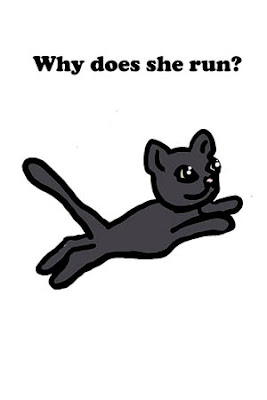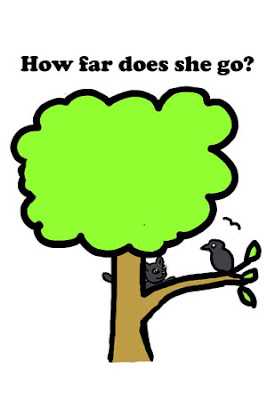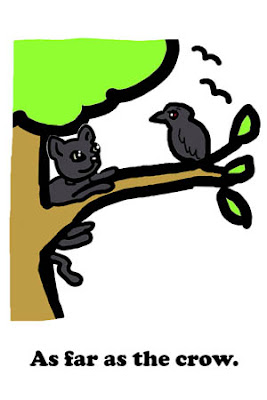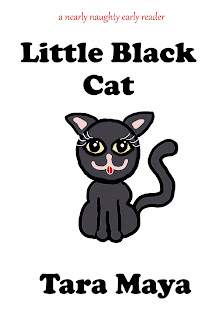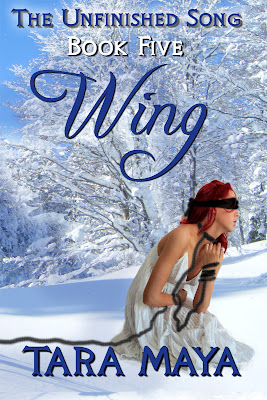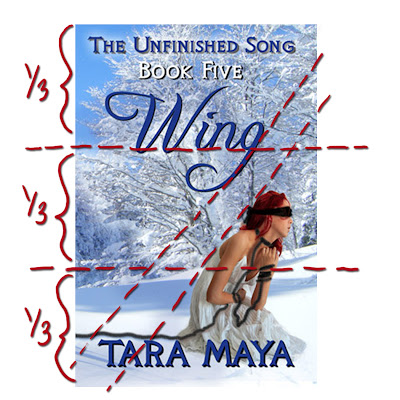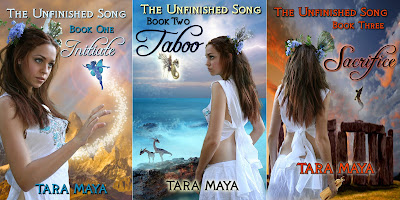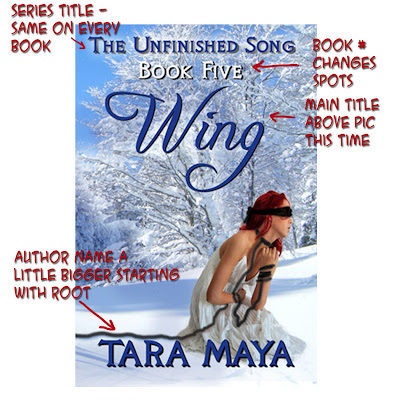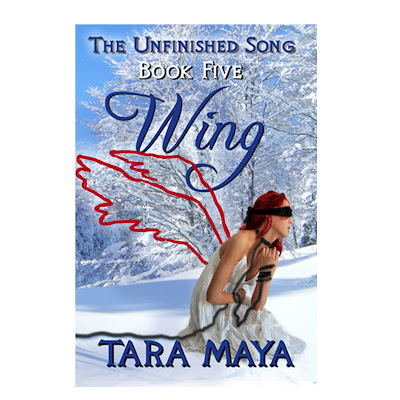Author Archives: Tara Maya
- by Tara Maya
How To Write A Series – 03 – Expanse
A story requires a certain heft or breath or extension to justify a series — what I’ll call expanse. But it also needs a degree of cohesion to link the volumes of the series. This tension between expanse and cohesion is what makes for a good series.
Expanse can apply to one or more categories:
1. Length
Length is the first obvious test of a series. Some series are essentially one long story, split into separate volumes mostly for convenience. Possibly, as digital books replace paper books, the rational behind splitting the books up will not be a strong. We might see some authors publishing 500,000 or 1,000,000 word “novels.” But I suspect even in that case, the story would be subdivided into sections of some sort. The cohesion of a long story is easy to see if it has the same protagonists, antagonists, theme and story arc.
2. Cast
Cast is the number of major players involved in the story. The basic rule of thumb is that the more major characters there are — usually this means they are PoV characters at some point — the longer the story needs to be. Add enough characters and you almost have to have a series to do them all justice. The obvious question to ask is whether these characters’ stories connect enough to justify inclusion in the same series. Perhaps their stories would be better told separately. The stories of the various characters must interact and influence each other enough to cohere as a series. In certain kinds of series, the link may indeed be tenuous. It’s possible follow the successive stories of seven princes, three brothers, or successive generations, or employees at the same shadowy paranormal agency.
3. Duration
The duration of time covered in the story also impacts whether it makes sense as a series. If you’re following a child through several years of school (Harry Potter) or a naval officer through his career (Horatio Hornblower), this expanse of time is well suited to a series. The cohesion comes from following the same character despite the long period of time covered.
4. Cases
Any story that follows a protagonist or multi-player cast through repeated episodes, incidents or cases of a similar type is well-suited to a series. This is why almost all detective and police procedural stories are natural series. The police or detectives take case after case, a new one (or more than one) in each book (or television episode). The same principle applies to any repeated case. Doctor / nurse / hospital stories easily fall into this pattern, as do spy stories. Buffy the Vampire Slayer weekly battled vamps and other demonic foes in Sunnydale. Tarzan repeatedly stumbled across blonde queens ruling lost cities in the middle of Africa. A key to a cohesive series is that the cases are all of a type. It wouldn’t make sense, usually, to have a murder investigation in one episode, cure a sick man in another, and find a lost city in the third — unless there was some other obvious connection (and these storylines were subplots). On the sf series Stargate, for instance, the team might do all of those things in different episodes, but all within the frame of visiting a new world through the Stargate.
5. Space
Finally, some worlds are so large that they need exploring. The journey or journeys to cross the world and explore the many nooks and crannies or subcultures requires a series. The space may be a cultural space: the subterranean criminal culture of gangsters (Sopranos) or prison inmates (The Wire) or 60s advertisement writers (Mad Men). It could be a world war or a civil war. Much epic fantasy not only has a large cast and long story arc, it also showcases a unique magical world with its own distinct rules and cultures. The same is true for much space opera. Cohesion in such stories is provided by the protagonist/s as they traverse the various climes and demesnes of the world.
In general, the greater the expanse included in the story, the more likely it requires a series to explore fully. There is, however, a caveat; this must never be at the cost of the cohesion of the story. James Michener’s novel The Source uses the frame of an archeological dig to glimpse into separate stories that cover thousands of years. The linking motif comes from objects dug up by the archeologists. These disparate stories, so far apart in time and cast, are joined into a believable unity by Michener’s clever frame and by the fact that they all occur over the length of one novel. If Michener had tried to write a separate book for each time period, it would have been much harder to keep the story cohesive.
- by Tara Maya
Awesome Shows With Paranormal / Dystopian Hotties
Have you seen the hotties on the new slew of paranormal and dystopian shows? Yuuuuummy. I salute my new faves. SPOILERS ALERT!!!
Revolution:
Genre: Dystopia
Premise: Despite the fact that nation states long preceded electricity, enduring thousands of years in much the same borders, and often with much the same form of governance, a sudden lack of iPhones able to play Angry Birds leads to the instant destruction of the United States. Everyone resorts to crossbows and thuggery.
Hotties To Watch Out For: Charlie is a badass heroine, who goes looking for her uncle–who turns out to be pretty badass himself. But the romance to keep your eye on is between Charlie and arrow-wielding Nate, who turns up to rescue her from some thugs and accompanies her on her journey.
What Keeps Them Apart: [SPOILER!] Nate works for the Bad Guy…he’s been spying on the heroine the whole journey. Youch!
 |
| Tracy Spiridakos as Charlie Matheson flourishes her crossbow in “Revolution.” |
 |
| In the future, there’s no guilt about taking freeways–they’re strictly green. |
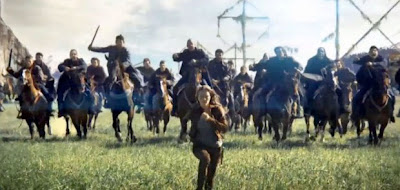 |
| Without cell phones, George Washington would not have been able to enforce the Constitution either. |
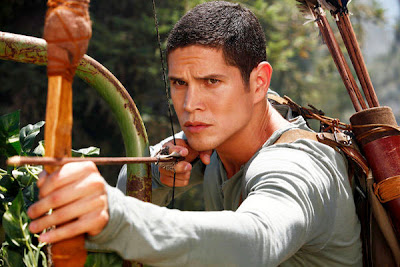 |
| JD Pardo as Nate. He made those arrows himself, sucka. And wove that skintight microfiber shirt on a hand-loom. |
Arrow:
Genre: Super Hero
Premise: Billionaire hottie and good-time boy Oliver Queen was stranded on island for five years, all alone except for the martial arts school stranded with him.
Hotties To Watch Out For: [SPOILER!] Green Arrow is smokin’. With a name like Oliver Queen, and the nickname “Ollie,” you can bet he got into a LOT of fights during his prep school days to prove his manhood. And it shows. But don’t brush off his love interest. She might have some super chops of her own…
What Keeps Them Apart: [SPOILER!] Ollie’s loyal, good-time boy bff… is the unexpected isosceles of this love triangle. I was hoping for Batman, but ok.
 |
| Fortunately, I never get tired of a man with a bow. Yummmmmm. |
 |
| Awwww. None of these colors appears in the actual palette of the show. |
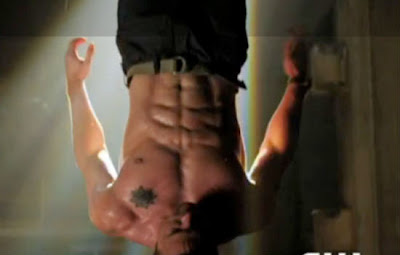 |
| Stephen Amell as the abs…I mean, Green Arrow. Hell yeah! |
Beauty and the Beast:
Genre: Urban Paranormal Police Procedural
Premise: [SPOILER!] Law-Student-turned-Kickass-Cop-Detective heroine Cat is stalked by a mysterious rescuer, Doctor-turned-War Hero-turned-Presumed Dead Vet-Monster. Sadly, he’s not a strange leonine magical were-beast but just a government-super-soldier from a project that lost funding (yawn). Also, his monster make-up is as weak as that premise. However, his winsome, heart-felt looks make up for everything.
Hotties To Watch Out For: Cat and Vince. Oh, the longing. Oh, the sexual tension. This is gonna be fun.
What Keeps Them Apart: [Don’t worry, so predictable, not at all a spoiler.] Paraphrasing: “I’m a monster! I don’t want to hurt you.”
 |
| Brooding. Check. |
 |
| Jay Ryan (“Terra Nova”) now back from fighting dinosaurs. |
 |
| Catherine “Cat” Chandler (Kristin Kreuk) dines with monster Vincent Keller (Jay Ryan). “So… Do you want to eat me?” |
- by Tara Maya
Kid’s Corner – Little Black Cat
- by Tara Maya
La Vie En Rose
I was wearing a gorgeous gown fit for a faery princess. A wonderful ball was being thrown in my honor, attended by all the people I most loved and respected. Delicious food and wine flowed unendingly. There was even cake, the absolute tastiest cake you could imagine. The man I loved most in the world had just promised to spend the rest of his life with me.
And I couldn’t take it anymore. I ran away in the middle of a conversation, hid in the dressing room, stared at myself in the mirror, despaired of my existence, and cried.
Yes, it was my wedding.
Why did I cry? Because I was afraid it was too good to be true–love can’t really last forever, can it? So I was just setting myself up to be destroyed. Because life goes by so fast, and then we wither and wrinkle and die. I still felt like a child, but here it was my wedding…before I knew it I would be staring into an old woman’s face, and into death. Because I loved my wedding dress and wanted to wear it forever, but now I had to change into another (also gorgeous) dress. Because no matter how much you want to, you can’t wear your wedding dress every day.
A release day is like your birthday or your wedding. You’re surrounded by friends, you’re getting presents, and you know you should be happy–and you are, you very much are–but never as happy as you feel you ought to be. Any little thing that goes wrong feels like the earthquake that destroyed San Francisco.
There’s plenty of emotion, including joy. But not limited to joy. There’s also anxiety, guilt, worry, despair at the transience of our own mortality (obviously, right?) and sheer terror.
At least, that’s how it is for me. I had a great release day–Wing reached #6 on Amazon’s Hot New Fantasy Releases–and I have all of you guys to thank for that. I don’t want anyone to think I don’t appreciate it. I do.
So don’t take it the wrong way if I confess that I spent half my release day swimming in joy and the other half fighting off an oil spill of black, sick depression. Admitting it, writing this, is actually helping me through it, as I can see how the two are intimately connected. High expectations, a long period of stress and the sheer terror of releasing my new book into the world, it’s all rolled together.
On my wedding day, my mom and my friends left me to myself in the dressing room for a while, as I requested, then came in, hugged me, re-touched my make-up for me, helped me zip up the new dress, and shoved me back out the door into the ballroom. There, while everyone watched and cooed, I danced with my true love to the strains of La Vie En Rose.
- by Tara Maya
Release of Wing! Book 5 in the Unfinished Song is Here!
Wing, Book 5 in The Unfinished Song is here! To celebrate, today only there will be a special price. Pick up your copy as soon as possible!
Here’s where you can buy it:
Amazon **
Kobo
Smashwords
Barnes and Noble
Amazon UK
Amazon DE
Amazon FR
Amazon ES
Amazon IT
** Please use only this Amazon link. There is currently a pirated copy on Amazon for $1.99.
If you haven’t started the series yet, you can begin the first book Initiate for free, here:
Amazon
Kobo
Smashwords
Barnes and Noble
iTunes
Sony
Amazon UK
Amazon DE
Amazon FR
Amazon ES
Amazon IT
Now…the back cover and a sneak peak into the first chapter of Wing!
–>
–>
Chapter One
Blade
Umbral
–>
Umbral
Dindi
- by Tara Maya
Analysis of a Book Cover
One more day…
With just ONE DAY LEFT to the release of Wing, I thought it would be fun to take a look at the book cover. What goes into the design of a book cover?
The first consideration is obvious: a cover should have aesthetic appeal. The image should caress the imagination, not assault the eyes. One mistake that some writers make, when they have control over their covers, is to want to stuff all the events of the book into the cover. Or they want to show a scene (not always a bad idea) with every detail exactly as it is in the book (always a bad idea).
For a lot of reasons, that’s not practical. Yes, sometimes the artist has time and a budget of thousands of dollars to hire models, make sketches, paint with oils, let the oils dry, die tragically young after lobbing off a few facial features, become famous after death, have his paintings posthumously sell for millions at auction, have other artists rip off his style in cheap knock-off paintings done in artistic slave factories in China, have one of those scanned into Photoshop, and finally (a crucial step) have all the heads in the scanned painting replaced with other heads, thus creating a unique picture which can be used as a book cover. But there’s not always time for that.
Instead, when you look at most covers, you’ll find they strive for a simple, striking design evocative of the mood of the book, portraying a main character, in a pretty dress. And it should follow the rule of thirds. You’ll notice that the sky and tress take up two thirds of the space; the human figure also takes up about a third of the space.
Wing is Book 5 in The Unfinished Song series, so it has to have some features in common with the previous books. The Unfinished Song is a twelve book series, but here’s a little secret–you can subdivide that into four parts, or four trilogies, each with their own story arc.
The first three covers all feature the heroine, Dindi, in her white Initiate garb, because the entire trilogy takes place over the year she is undergoing her tribe’s initiation into womanhood.
The first book shows Dindi against a mountainous background, because she travels from her clanhold in the mountains to a new place — Yellow Bear, where she will undergo the Test to see if she is worthy of becoming a Tavaedi. The little pixie shows that this is fantasy, and it will involve pixies…among other fae.
The second book cover shows the ocean, and a couple dragon-like faeries, because during this book. Dindi accompanies badass warrior Kavio on a peace mission to an enemy tribe, the Blue Waters, who live by the…wait for it… ocean. (They have a thing for sharks.)
On the third cover, we have a glimpse of the Stone Hedge where Dindi must confront the fae…among others. The winged figure in this picture is ambiguous, a little ominous… is it a faery? High Fae? Or Lady Death herself? This is also the first (and so far only) cover to show the corncob doll. The doll is show larger than described in the story, actually, because otherwise it would be almost impossible to see.
Root, Book 4, departs in some ways from the first three books. The actress is the same model (I’m not sure if you noticed) but she’s in a different outfit. Hm…doesn’t look too Neolithic in fabrication, but let’s hurry over that… The main point is that she’s no longer in white. She’s past her Initiation, and no longer quite so innocent. (Those aren’t tatoos on her face, by the way, but henna.) The green color scheme and forest background reflect the new lands the heroine is visiting. The black of her garment hints at a character who is not shown on the cover: Umbral, the Deathsworn who is hunting Dindi.
So now we come to the fifth book. Obviously, it’s important to preserve some of the same “look” as the series, while also hinting at the big conflict in the book — the fact that the heroine has been captured by her enemy, Umbral.
The unity of the series is maintained through the choice of fonts. It’s a good idea to never use more than three fonts on the same cover. Two is better. Here, and throughout the series, there are two. One for the title and another font for everything else. The exact position of the series name, book number, title and author name vary from cover to cover. Root and Wing, both part of the second trilogy, use a slightly larger font size for author name and title than the first trilogy.
Font choice is a standard feature for each book in the series. But obviously it’s important to make THIS book stand for itself too. Wing takes place over three moons, from the winter solstice to just before the spring equinox, and much of the time is spend on the slopes of mountains buried under winter. The dyed hair, black bindings, and faery dress all turn up in the book. The motif of wings also features strongly in the story. There’s no other reason for the blue and white color scheme, since the tribe they are approaching uses Orange magic. As I mentioned before, it’s more important to choose a color scheme that is visually compelling than one that reflects the events of the books literally.
Still…look for an orange-red color scheme in the next sequel, Blood.
Sometimes it’s also possible to throw in nice extras to the design. Did you notice the shape formed by the pattern of snowy trees behind Dindi?


